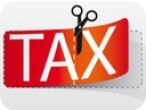Aug 26, 2024
Trump vs. Harris: Diverging Plans to Combat Poverty in America
TaxesTrump vs. Harris: Diverging Plans to Combat Poverty in America
Trump vs. Harris: Diverging Plans to Combat Poverty in America
The battle between former President Donald Trump and Vice President Kamala Harris over how to combat poverty in America has grown increasingly heated. Both figures have laid out distinct plans that showcase their diverging approaches to this pressing issue. Their strategies reveal much about their broader political ideologies and governing priorities. In this blog post, we dissect these plans and what they mean for the future of poverty alleviation in the United States.
Trump's Approach to Combating Poverty
Donald Trump's strategy for addressing poverty is closely aligned with his free-market principles and conservative ideology. His plan focuses on job creation, economic growth, and reducing government intervention. Below are the key components of Trump's approach:
- Tax Cuts and Jobs Act: This legislation aims to stimulate economic growth by reducing corporate tax rates, which Trump argues will lead to job creation and higher wages for low-income workers.
- Deregulation: Trump believes that reducing government regulations on businesses can spur economic activity and create more opportunities. His administration has rolled back numerous regulations across various sectors.
- Work Requirements for Welfare Programs: Trump advocates for imposing work requirements on recipients of welfare programs, such as Medicaid and food stamps, to encourage self-sufficiency.
- Opportunity Zones: Established by the 2017 tax cuts, these zones offer tax incentives to investors who develop properties in economically distressed communities.
- Economic Growth as Poverty Alleviation: At the heart of Trumps plan is the idea that a strong economy naturally reduces poverty by creating jobs and increasing income levels.
Harris's Plan to Tackle Poverty
Kamala Harris takes a more progressive approach compared to Trump, emphasizing comprehensive social safety nets and targeted economic interventions. Here are the primary elements of Harris's plan:
- Expanding Healthcare Access: Harris supports expanding the Affordable Care Act and eventually transitioning to a single-payer healthcare system, ensuring all Americans have access to medical care regardless of income.
- Raising the Minimum Wage: Harris advocates for increasing the federal minimum wage to $15 per hour, aiming to lift millions of workers out of poverty.
- Enhanced Social Programs: She proposes expanding access to programs such as SNAP (food stamps) and TANF (Temporary Assistance for Needy Families) to provide greater support to low-income families.
- Affordable Housing Initiatives: Harris plans to invest in affordable housing projects and increase funding for Section 8 vouchers to help low-income Americans find stable housing.
- Targeted Economic Interventions: Harris stresses the importance of initiatives like job training programs, child care support, and paid family leave to help break the cycle of poverty.
The Impact on Everyday Americans
Both approaches have their strengths and potential drawbacks, and their success will largely depend on implementation and the broader economic environment. Trumps focus on economic growth may yield significant job creation but could also lead to increased inequality if the benefits are not equally distributed. Harris's plan aims to provide immediate relief and support to low-income individuals but requires substantial government funding and could face pushback over its cost.
Comparing Policy Effectiveness
To understand which plan might be more effective, consider the following factors:
- Economic Impact: Trump's policies may drive short-term economic growth, but Harris's strategies aim for long-term stability by addressing root causes of poverty.
- Sustainability: Harris's plan requires ongoing government expenditure, while Trump's relies on market forces, which can be more volatile.
- Social Equity: Harris focuses on equity and support for the most vulnerable, whereas Trumps policies are geared toward broad economic enhancement.
- Feasibility and Public Support: Both plans will need to navigate political landscapes and varying levels of public support.
- Long-Term Societal Benefits: A balanced approach that integrates elements from both plans could offer the most comprehensive solution to poverty reduction.
Ultimately, the success of either plan will depend on a myriad of factors, including political feasibility, economic conditions, and the existing social fabric. Voters and policymakers must weigh the pros and cons of these strategies to decide which vision will better serve the nation's needs.
In today's economic climate, it's crucial to be proactive about managing your finances. To learn how to save on taxes and optimize your financial strategy, schedule a call with our team. Additionally, you can on our homepage.
Stay connected
Schedule a free consultation to discuss your goals with an expert
Discover our Podcast
Our expert guests provide valuable insights, tips, and advice, as well as engaging stories and thought-provoking discussions that will leave you with a newfound appreciation and understanding of business.



Join our Community
Discover useful tax saving strategies and advice from experts and fellow members. Our FREE community resources and support help you boost your tax savings, allowing you to retain more of your hard earned money for your family.